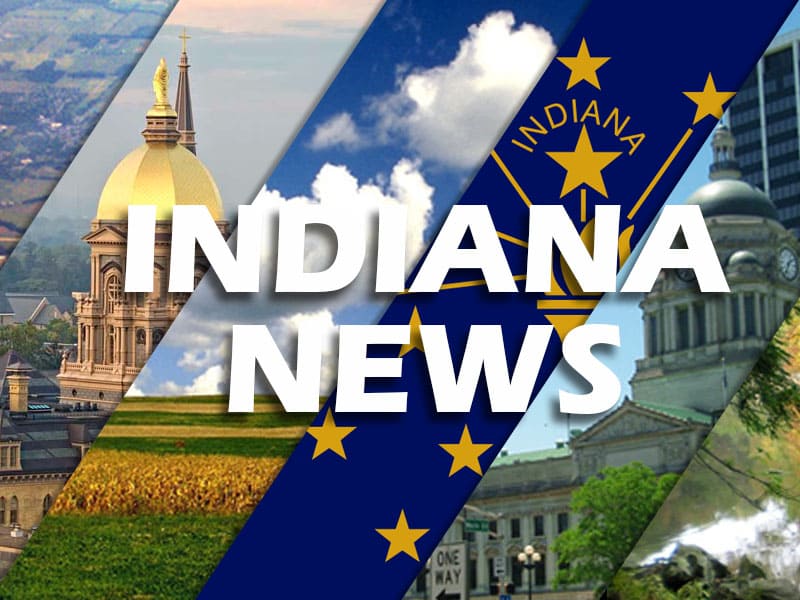Indiana added nearly 31,800 residents in 2018 to reach a total population of 6.69 million, according to the latest population estimates from the U.S. Census Bureau.
The 0.5 percent increase represents the state’s largest annual gain since 2009 and outpaced each of its neighboring states. Sixty of Indiana’s 92 counties posted a population gain in 2018, the largest such tally since 2005.
“While Indiana’s 2018 gains are strong by post-Great Recession standards, this level of growth is still well below that seen during much of the 1990s and 2000s,” said Matt Kinghorn, senior demographic analyst at the Indiana University Kelley School of Business’ Indiana Business Research Center. “Indiana’s average annual population gain during the 1990s was 53,600 residents per year, for instance, while the state added an average 40,300 people annually during the 2000s.”
The Indiana Business Research Center is part of a national network of state data centers and acts as Indiana’s official state representative to the Census Bureau on matters relating to the census and population estimates.
The uptick in the state’s population growth last year was driven entirely by an increase in net migration. Between 2010 and 2017, Indiana had an average annual net inflow of roughly 1,900 residents, yet this measure stood at nearly 12,800 residents in 2018.
“Not only does this number stand out in this largely low-migration period after the Great Recession, it is also significantly higher than the state’s average annual net inflow of 9,200 residents per year in the 2000s, although it is still well below the mark of 17,600 residents per year during the 1990s,” Kinghorn said.
Meanwhile, natural increase — the number of births minus the number of deaths — remains the largest driver of growth for Indiana. Yet, it also continues to act as a headwind on the state’s population gains. Indiana’s slide in natural increase is the result of a slow but steady rise in the number of deaths as the state’s population ages, coupled with a dramatic decline in the number of births in Indiana over the past 10 years.
In fact, the Census Bureau estimates that there were 81,075 births in the state in 2018, the lowest annual total since 1987.
Around Indiana
Once again, the state’s fastest-growing counties are in the Indianapolis metro area. Hamilton County led the state with a 2.2 percent population gain in 2018, followed by Hendricks County (2.0 percent), Hancock County (1.9 percent) and Boone County (1.8 percent). After averaging a decline of 30 residents per year from 2010 to 2017, Brown County’s population grew by an estimated 235 people in 2018 — the state’s fifth-highest rate of growth at 1.6 percent.
Hamilton County leads the way in numeric gains for the fourth straight year by adding 7,004 residents. Marion County posted the state’s second-largest increase, adding 5,718 residents in 2018. Other top gainers include Hendricks (3,251), Allen (3,141) and Johnson (2,303) counties.
Even with stronger population growth statewide, more than one-third of Indiana counties still lost population last year. Delaware County had the largest decline with an estimated loss of 617 residents. Lake County had the state’s second-largest drop at 355 residents.
“For Lake County, this 0.1 percent decline actually represents a significant improvement, as the county averaged a loss of roughly 1,600 residents per year from 2010 to 2017,” Kinghorn said.
As for the pace of population loss, Union County had the state’s fastest rate of decline last year at 1.7 percent, followed by Blackford (-0.8 percent), Miami (-0.7 percent) and Jay (-0.7 percent) counties.
Drivers of change in Indiana counties
In 2018, 49 Indiana counties had net in-migration of residents. Brown County led the way with a net inflow of 18.5 movers per 1,000 residents in 2018. Other counties with high migration rates include Hancock (16.5 movers per 1,000 residents), Hendricks (15.8) and Hamilton (15.3) counties. Forty-three Indiana counties had a net outflow of residents last year.
Twenty-six Indiana counties registered a natural decrease of the population in 2018, meaning that deaths outnumbered births. Wayne, Grant and Greene counties each had a natural decrease of more than 100 residents last year.
Indiana’s metropolitan magnets
Population growth in Indiana continues to be driven by a handful of metropolitan areas. Chief among these is the 11-county Indianapolis-Carmel-Anderson metro area, which added nearly 22,000 residents last year, accounting for 69 percent of Indiana’s net growth in 2018. The Indy metro area is home to nearly 2.05 million people, which represents 31 percent of the state’s population and ranks as the nation’s 34th-largest metro area (out of 383 metros).
Compared to large metro area peers in neighboring states, the Indy area’s growth rate of 1.1 percent in 2018 was slightly lower than Columbus, Ohio (1.2 percent), but it outpaced Cincinnati (0.5 percent), Louisville (0.3 percent), Detroit (0.1 percent), Cleveland (-0.1 percent) and Chicago (-0.2 percent).
The Gary Division of the Chicago metro area (Lake, Porter, Jasper and Newton counties) is the state’s second-largest area with 701,386 residents. The Gary area added nearly 576 residents last year, which marks only the second time since 2010 that this area posted a population gain.
Many of Indiana’s other metro areas also grew last year, including Fort Wayne (0.8 percent growth), the Indiana portion of the Louisville metro (0.8 percent), Lafayette-West Lafayette (0.7 percent) and Elkhart-Goshen (0.6 percent).

